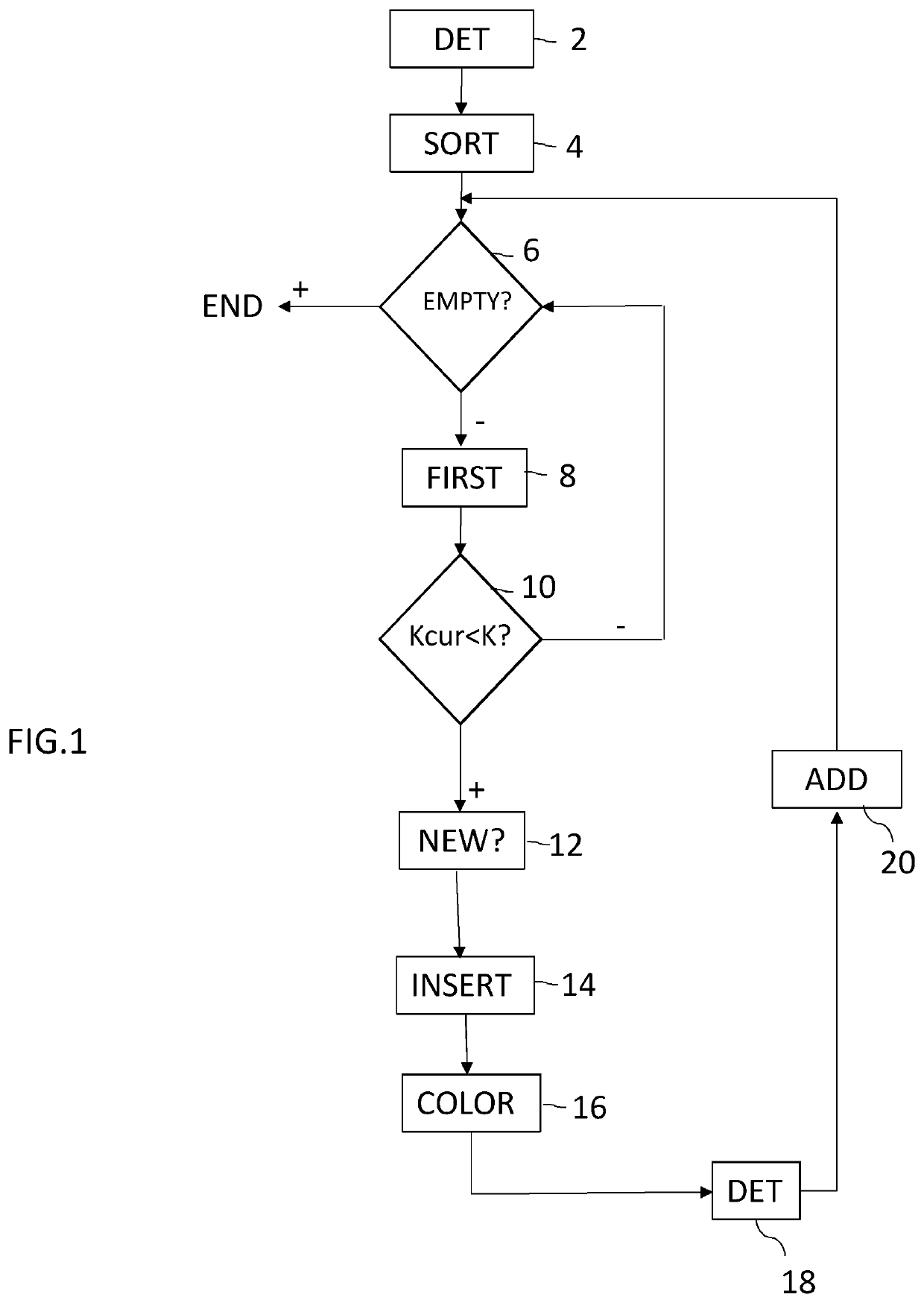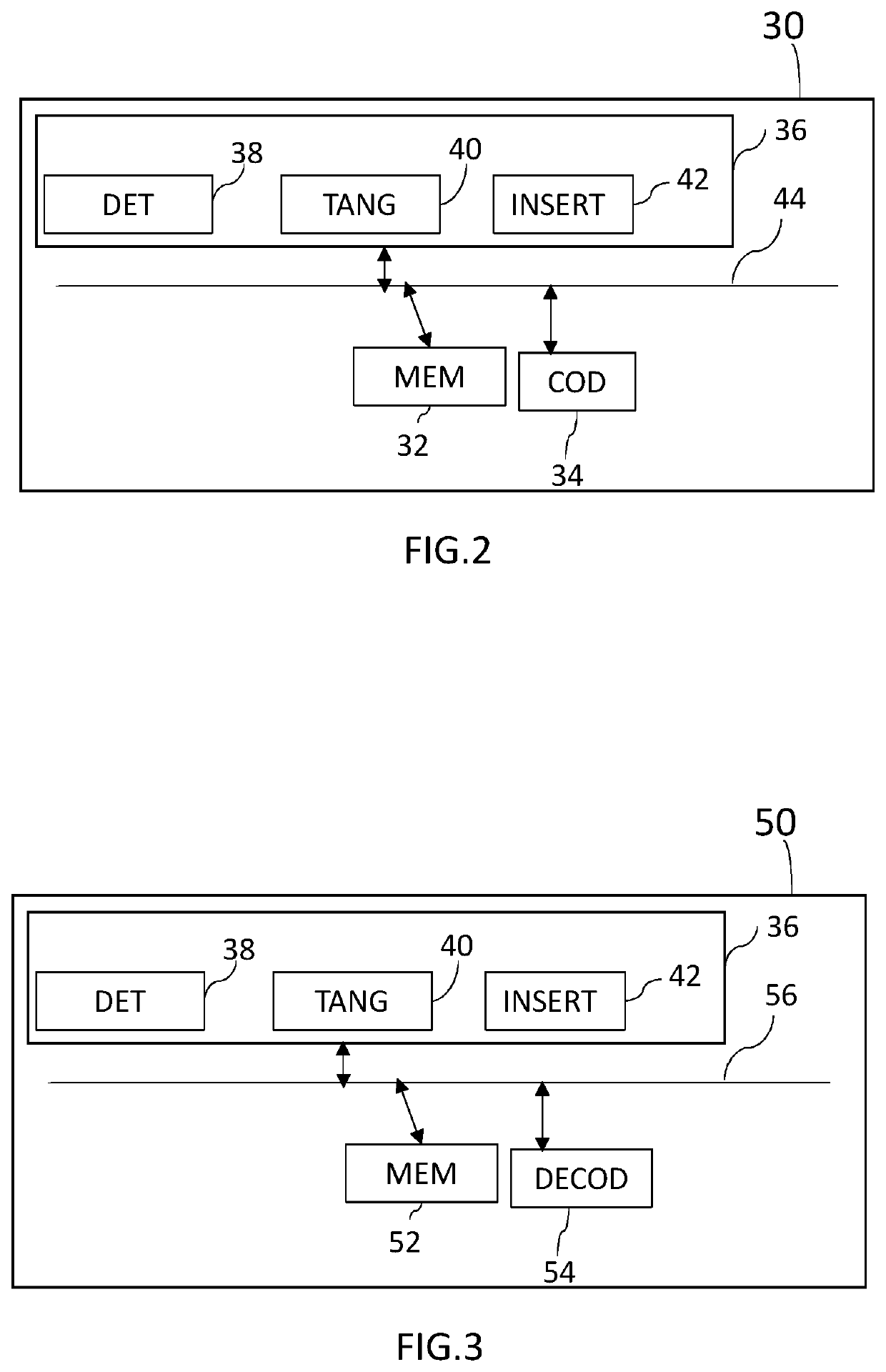Method and device for up-sampling a point cloud
a point cloud and up-sampling technology, applied in the field of point cloud data sources, can solve the problems of large storage space occupation, large amount of point clouds, and invariably noisy point clouds captured using commercial laser range scanners,
- Summary
- Abstract
- Description
- Claims
- Application Information
AI Technical Summary
Benefits of technology
Problems solved by technology
Method used
Image
Examples
second embodiment
[0077] the range of neighborhood within which new points will be added around each under-sampled point is determined as:
[0078]SFill={1,ifKP1>ThresAdaptiveRangetheminimumvaluethatsatisfiesKPSFillP>ThresFill,ifKP1≤ThresAdaptiveRange
where KP1 is the number of distance 1 neighbors of the under-sampled point and KPSFill is the number of distance SFill neighbors of the under-sampled point and where ThresAdaptiveRange and ThresFill are predetermined thresholds, for example ThresAdaptiveRange=2, ThresFill=8.
[0079]This second embodiment requires less computational complexity as it does not need to recursively process the new points just generated during the process.
[0080]During this step 12, the local tangent plane of the under-sampled point is calculated.
[0081]The considered under-sampled point is a point belonging to an under-sampled region and is denoted as PUnderSampled.
[0082]The local tangent plane of PUnderSampled is determined ...
first embodiment
[0092] for each of the un-occupied distance-S neighbors, PUnOccupi, of PUnderSampled, its possibility of being inserted around PUnderSampled is determined based on the following 3 factors.
1. 1st Factor
[0093]The first factor is |{NeighDisSi}|, the number of the distance-S neighbors of PUnOccup.
[0094]This factor penalizes those potential new points requiring inserting more points around them. The higher |{NeighDisSi}| is, the more possible that PUnOccupi will be added to the point cloud.
2. 2nd Factor
[0095]According to a first variant, the second factor is the change of the distance between the further neighborhood and the local neighborhood of PUnderSampled if PUnOccupi is inserted, denoted as DisChangeNeighborhoodi.
[0096]The distance between the further and the local neighborhoods of PUnderSampled is defined by
[0097]DisNeighborhood=∑{NeighFurtherm}min{NeighLocaln}(NeighFurtherm-NeighLocaln),
where {NeighLocaln} and {NeighFurtherm} are the local and further neighborhoods of PUnderS...
PUM
 Login to View More
Login to View More Abstract
Description
Claims
Application Information
 Login to View More
Login to View More - R&D
- Intellectual Property
- Life Sciences
- Materials
- Tech Scout
- Unparalleled Data Quality
- Higher Quality Content
- 60% Fewer Hallucinations
Browse by: Latest US Patents, China's latest patents, Technical Efficacy Thesaurus, Application Domain, Technology Topic, Popular Technical Reports.
© 2025 PatSnap. All rights reserved.Legal|Privacy policy|Modern Slavery Act Transparency Statement|Sitemap|About US| Contact US: help@patsnap.com


